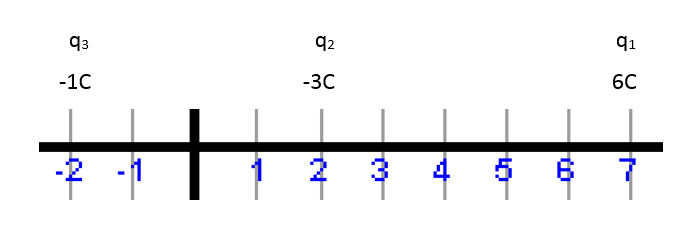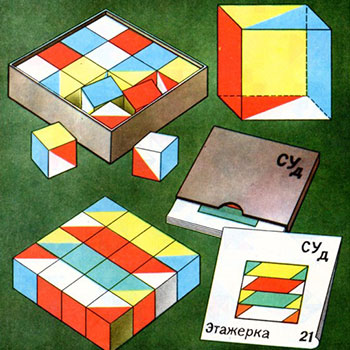
Consider the figure. Let the charges #6C, -3C# and #-1C# be denoted by #q_1,q_2# and #q_3# respectively.
Let the positions at which charges are placed be in the units of meters.
Let #r_13#be the distance between the charges #q_1 and q_3#.
From figure
#r_13=7-(-2)=7+2=9m#
Let #r_23#be the distance between the charges #q_2 and q_3#.
From figure
#r_23=7-2=5m#
Let #F_13# be the force due to charge #q_1# on the charge #q_3#
#F_13=(kq_1q_3)/r_13^2=(9*10^9*(6)(1))/9^2=0.667*10^9N#
This force is attractive and is towards charge #q_1#.
Let #F_23# be the force due to charge #q_2# on the charge #q_3#
#F_23=(kq_2q_3)/r_23^2=(9*10^9*(3)(1))/5^2=1.08*10^9N#
This force is repulsive and is towards charge #q_3#.
The total force or net force on charge #q_3# is the sum of above two forces.
Since the above two forces #F_13# and #F_23# are in same direction therefore we have to subtract smaller force from larger force.
Let #F_3# be the total force on the charge #q_3#.
#implies F_3=F_23-F_13=1.08*10^9-0.667*10^9=0.413*10^9=4.13*10^8N#
#implies F_3=4.13*10^8N#
Since The larger force #F_23# is towards charge #q_3#.
Therefore the force #F_3# is also towards charge #q_3#.

